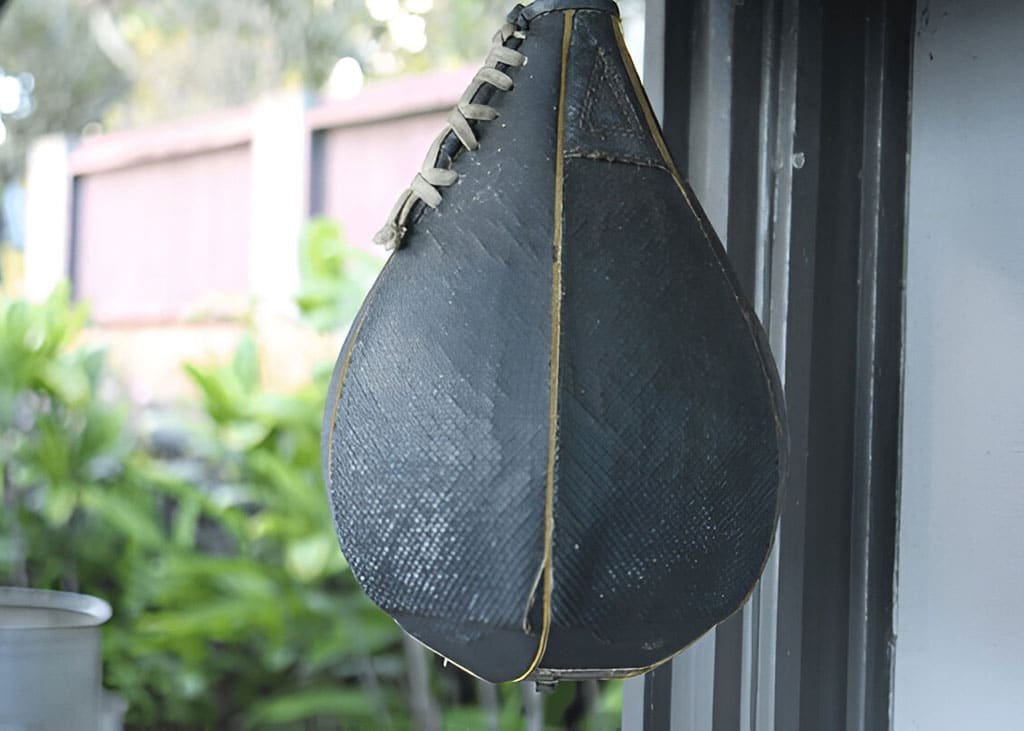Introduction: Why This Setup Changes Everything
Hey friend! Have you ever watched someone lightning-jab a reflex bag and thought, “Damn, I want that speed.”? Well, you can bring that exact energy into your own space—with just a bit of setup and creativity. A home reflex bag isn’t just a tool—it’s a game-changer. It sharpens your timing, hones your rhythm, and turns reflex training into something fun and satisfying.
Imagine putting on gloves, eyeing the bag, and attacking with crisp, snappy jabs that bounce it just right. It fills you with focus, presence, and a burst of adrenaline. And the best part? You don’t have to leave home.
In this guide, I’ll walk you through every single detail in a friendly, down-to-earth way. You’ll know exactly what gear to pick, how to set it up perfectly, and how to train like a champ—even in tight rooms. Ready? Let’s do this.
What Is a Reflex Bag & How It Ups Your Game
How a Reflex Bag Works
At its core, a reflex bag is a weighted base topped with a springy pole and a small striking head. When you land a jab, the bag dramatically swings away and snaps back unpredictably. That bounce-back trains your brain and body to react instantly—forcing split-second timing precision.
Unlike a heavy bag, which is all about power, this one is about finesse and accuracy. You tap it with a snappy punch—and it tells you whether your form is smooth or sloppy. It’s almost like sparring—but solo.
Styles of Reflex Bags
You’ll find a few types:
- Spring pole, free-standing reflex bags: Base, spring-loaded pole, head—easy to assemble.
- Cobra-style pro bags: Speedier rebound, better build quality.
- Double‑end bags: Anchored ceiling to floor—minimal footprint.
- Elastic reflex balls: Headband ball tools for ultra-portable work.
Each one trains reflexes, timing, and coordination differently—but all sharpen your reaction game.
What You Gain from Regular Use
Using a reflex bag regularly helps you:
- Build precise hand-eye coordination.
- Develop razor-sharp reaction speed.
- Improve footwork—since you must move with the bag.
- Get cardio benefits with low joint strain.
- Train defense and rhythm, slipping or striking in tune.
- Experience emotional perks: it’s therapeutic, focus-building, stress-relieving.
Reddit feedback sums it up: “Helps you learn how to always hit the target even if you can’t throw perfectly” and “so addictive and a good aerobic aid.”
Choosing the Right Reflex Bag for Your Home
For Beginners
Look for an adjustable-height spring bag with slower rebound. You learn form and timing without battling a machine.
For Intermediate and Advanced Users
Go for cobra-style bags—snappier springs, faster return, and more accurate bounce back. Durable PU leather heads help maintain crispness over time.
Free‑standing vs. Mounted Options
- Free‑standing: Moveable, no wall digging required.
- Double-end / wall-mounted: Fit in tighter spaces but demand secure ceiling and floor anchors.
Material & Price Tiers
- Budget ($40–80): Basic plastic spring and light head—great for beginners.
- Mid-range ($90–150): PU head, stable base, better spring response.
- High-end ($200+): Pro-level springs, solid build, smoother rebound.
What You’ll Need to Set It Up
Essentials
- The reflex bag kit (pole, base, bag/head)
- Fill material: Sand (heavier) or water (easier fill), or a combo
- Hand wraps or bag gloves (protect joints and maintain form)
- Assembly tools (usually included, like wrench)
Helpful Add‑Ons
- Floor mats to reduce noise and improve base grip
- A mirror for form checking
- An interval timer or app for rhythm sets
- Resistance bands or jump rope for warm-up drills
DIY Approaches
If you’re handy: use flange, pipe, wood base, slip bag or small mitt, weighted containers—even old kettle bells or water jugs. Reddit users report solid home builds for under $50 using MDF boards, galvanized pipe and standard slip bags.
Step‑by‑Step Setup Guide
Choose Your Spot with Care
Pick a flat, open area with 5 ft radius around the bag. Make sure there’s space to move freely and no fragile objects nearby. If neighbors below might hear you, workout during the day or on surfaces that dampen vibration.
Protect the Floor and Stabilize the Base
Lay foam or rubber matting to reduce noise and protect your floor. It also prevents slipping when you jab.
Assemble the Bag Components
Most kits follow these steps:
- Screw the pole into the weighted base.
- Attach the spring to the top of the pole.
- Fix the head or bag onto the spring.
Adjust the head height so it aligns near your chin or nose when you’re in stance.
Fill the Base Properly
- Fill with sand for maximum weight.
- Or water, which is easier to adjust.
- Best: a mix—sand for weight, water on top. You’ll end with a stable ~80–100 lb base.
Fine-Tune the Height
Stand naturally in your fighting stance. Adjust the head so your jab lands cleanly without shoulder strain or awkward angles.
Safety Check & Initial Test
Give it a soft tap—does it recoil swiftly and balance? Check screws tight, base firm, no wobble. Put gloves on, strike lightly, then increase speed.
Training in Tight Spaces or Apartments
No backyard? No problem:
- Use a compact base reflex bag in corner with mirror for space efficiency.
- Consider double-end bags, which need minimal floor area. Just anchor ceiling and floor to solid backing—not drywall.
Common Setup Mistakes & How to Fix Them
- Base underfilled → bag topples over
- Head height wrong → punching stiffness or inefficient stance
- Skipping gloves → scraped knuckles and wrist pain
- Not protecting floor → slipping or damage
- Ignoring maintenance → loosened screws, rust, unstable base
Avoid these and your training stays safe, effective, and fun.
Drills to Get You Started (Beginner to Advanced)
Beginner
- Jab + reset: hit, step back, breathe, repeat
- Jab–Jab + move: sync rhythm with footwork
- Slip & jab: slip inbound and punch immediately after movement
Intermediate
- Jab–Cross–Slip
- 3-punch combos with footwork: jab, cross, hook, pivot
- Random rhythm: alternate slow and fast jabs
Advanced
- Rapid 30-second bursts: focus on precision not power
- One-arm challenges: non-dominant-only sets to spark coordination
- Punch–Slip–Counter combos for defensive timing and reflexes
Work in rounds (30–60 sec), rest briefly, repeat. It builds cardio and focus.
Maintenance & Care Over Time
Weekly
- Check base weight and seals
- Tighten screws
- Wipe down bag with disinfectant if using gloves
Quarterly
- Inspect spring tension and elasticity
- Replace springs or heads if rebound slows or parts degrade
Annually
- Re-adjust height and confirm tension
- Store indoors—don’t leave in direct sun or damp areas
Consistent care ensures smooth action and longevity.
Long-Term Benefits & Emotional Impact
Over weeks and months, you’ll notice:
- Improved reaction speed and instinctive coordination
- Sharper timing and predictive accuracy
- Enhanced stress relief—there’s something satisfying about syncing punch to return swing
- Increased confidence—you actually see yourself improve
- Elevated fitness and mental discipline
Imagine feeling quicker in everyday moments; more composed when stress hits. That reflex rhythm becomes a tool in life not just training.
Conclusion
You’ve got everything now—knowledge, process, drills, and heart. Setting up a home reflex bag correctly isn’t just a DIY project—it’s your personal training zone, day or night. You’re building reflexes, discipline, stress relief, and satisfaction—all from that bouncy little bag.
So assemble it. Hit it. Move with it. Over time, it becomes second nature—and your reactions sharper, your focus clearer. You’ve got this.
Please read more about the best reflex bags.
FAQs
What height should my reflex bag head be?
At about your nose or chin when you’re in fighting stance. This ensures a straight, clean jab with minimal arm lift.
Should I use water or sand (or both) in the base?
Sand gives maximum stability; water is easier. Many users fill with sand first, then top up with water to reach ~80–100 lb.
Can I set it up on carpet or hardwood floors?
Yes—just use rubber or foam mats underneath to prevent slipping, noise, and surface damage.
Are gloves required?
Absolutely. Even light punches can scrape your knuckles or jar your wrists over time. Bag gloves or wraps are essential.
How often should I maintain or replace parts?
Check monthly for loose screws or leaks. Clean and test springs quarterly, and consider replacing springs/heads yearly—or sooner if wear appears.



